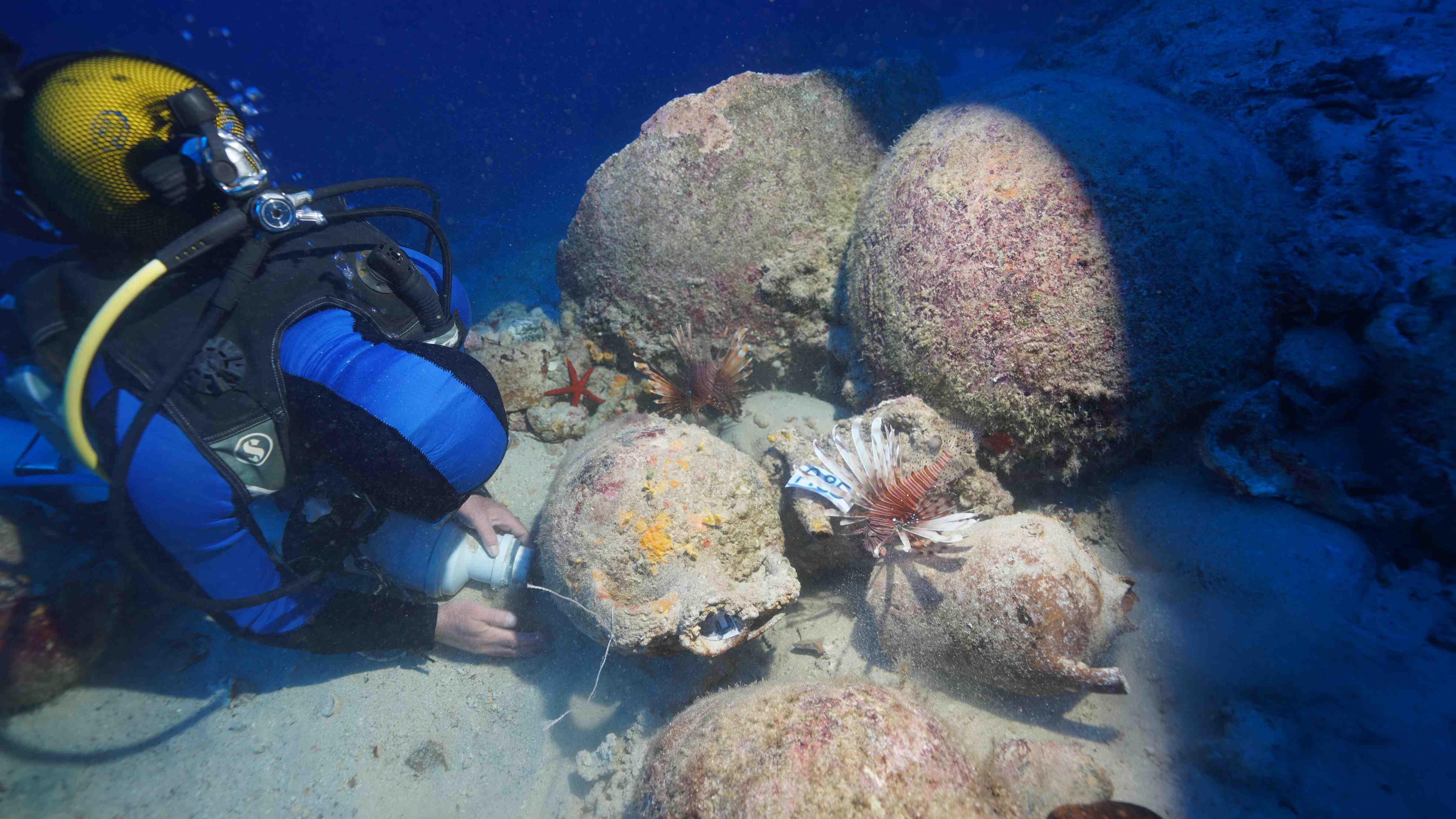
An amphora that has been sealed for 1,100 years and recovered from a shipwreck off the coast of Kaş in Antalya with the help of underwater robots excites archaeologists.
Associate Professor Hakan Öniz, head of the Department of Conservation and Restoration of Cultural Heritage at Akdeniz University's Faculty of Fine Arts and the scientific adviser of the excavation, along with a 20-member dive team, has been conducting underwater excavations in the Mediterranean Sea.
Working on behalf of the Antalya Museum under the Culture and Tourism Ministry’s "Legacy for the Future Project," the team carried out a deep-sea excavation near Besmi Island in Kaş with the help of robots.
After an operation, the team successfully removed a sealed amphora from a shipwreck approximately 45 to 50 meters deep, sparking great excitement.
The amphora, carefully processed through several steps before reaching land, was transported to Akdeniz University’s Underwater Archaeology Laboratory in Kemer, where it was first examined under microscopes and special magnifiers.
Later, experts from the Antalya Regional Board and laboratory restorers spent an hour opening the amphora’s mouth using chisels, hammers and small tools.
Samples from the amphora’s contents were collected and analysis began to determine what the material inside was.
As the amphora was opened, the scientists examined the texture, composition and scent of the material, attempting to identify it.
The opening of the amphora and the extraction process were documented by the state-run Anadolu Agency team.
Waiting for the results is even more thrilling
Öniz said that they believe the merchant ship set sail from the coast of Gaza, Palestine, and sank off the Mediterranean coast, possibly during a storm.
He explained that during that era, Gaza's major export was olive oil and that wine was likely exported from Gaziköy in Şarköy, Tekirdağ.
"This merchant ship visited several ports. It dates back to the 9th and 10th centuries during the Abbasid period, under Islamic rule," Öniz said.
"Considering the amphorae that likely carried wine, we do not believe the local population of Palestine consumed wine. Rather, it could have been intended as gifts for migrants, Christian pilgrims or those visiting Jerusalem," he added.
Noting how rare such a find is worldwide, Öniz said: "The fact that the amphora’s mouth remained sealed for over a thousand years is a unique case. It could contain olive pits, olive oil, wine or fish sauce — but it could also be something entirely unexpected. It is truly an exciting process because this is a sealed amphora. After 1,100 years, it has been opened, and we will only know its contents after the analysis. Opening it was thrilling; waiting for the results is even more exciting."
Professor Meltem Asiltürk Ersoy, from the Department of Materials Science and Engineering at Akdeniz University’s Faculty of Engineering, said this was the first time in her career she would be examining the material from a sealed amphora.
She noted the presence of mud-like samples and said, "We will try to understand what happened over the 1,100 years under the sea, subjected to both pressure and temperature fluctuations. Scientific research cannot rely on a single test; many different analyses must corroborate each other. Therefore, the process will be lengthy. We will combine the analysis results with historical knowledge from the period and present our findings to the worlds of science and archaeology."
Rabia Nur Akyüz, the restorer-conservator responsible for the desalination and opening of the amphora, said they worked with great care to keep the amphora constantly moist to prevent surface material from drying out.